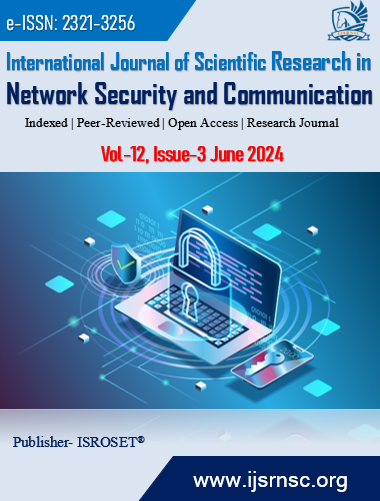Protection of Research Data and Devices from Malware Attacks Using Endpoint Security System in Network
Keywords:
End Point Security System, Virus, AntivirusAbstract
In ealier era, computer were used by limited organizations with limited Internet accessibility therefore data and device security were not big issue. Gradulay, uses of computer increased exponentialy therefore day-by-day it posing new data security challenges. As the uses of Intrenet increases, the challenges of critical data security also increased. Every 39 second, one cyber attack is occurring and thousands website hacked daily. Every establishment uses the computational devices with Internet for running and expnading their business. The computational devices are generting huge volume of data which is very sensitive and essenatial to run the organization. All the devices which are connected in open network are prone to attack by harmful viruses. In this hyper-connected world, protecting the devices and data from loss and unauthorized access are big challenge. The Process of protecting the data from destructive threats, unauthorised access and data corruption is known as data security. In past, the Antivirus software on individual desktop computer were sufficient to protect the device but for various network devices, which are connected in Local Area Network (LAN) is required integrated centralized solution along with management tools. Many antivirus tools sometime failed to detect the advance thretas due to that risk of vulnerability and data lost may increased. End point securiy is an process to protect the all devices which is connected in network. As the Internet uses grown, the types of the threats and techniques changed due to that these Antivirus tools could not prove full efficient to protect the sesitive data. The antivirus software can be used for individual machine but in organization Network, dedicated Endpoint Security System (EPS) is necessary for quickly detecting the malware and common security threats in advance. The EPS runs on organization security policy. In this paper we are discussing about the implementation of Endpoint Security system for protecting computational devices and protecting the scientific and bussiness data at CWPRS Local Area Network (CLAN). The Endpoint Security System has been successfully implemented for protecting the scientific data and devices from external possible thretas.
References
Molina-Coronado, B., Mori, U., Mendiburu, A., & Miguel-Alonso, J. “Survey of Network Intrusion Detection Methods from the Perspective of the Knowledge Discovery in Databases Process”, arXiv preprint arXiv:2001.0969, 2020.
F. Cohen, "Computer viruses: theory and experiments," Computers and Security, Feb., Vol.6, pp.22-35, 1987.
J. Shoch, J. Hupp, "The worm programs - early experience with a distributed computation," Commun. Of ACM, March, Vol.25, pp.172-180, 1982.
E. Spafford, "The Internet worm program: an analysis," ACM Comp. Commun. Rev., Jan., Vol.19 , pp.17-57, 1989.
S. Cass, "Anatomy of malice," IEEE Spectrum, Nov., pp.56- 60, 2001.
Cert-In, Information Security Policy for protection of critical information and infrastructure CERT-in/NISAP/01, May, Issue.1, 2006.
Downloads
Published
How to Cite
Issue
Section
License

This work is licensed under a Creative Commons Attribution 4.0 International License.
Authors contributing to this journal agree to publish their articles under the Creative Commons Attribution 4.0 International License, allowing third parties to share their work (copy, distribute, transmit) and to adapt it, under the condition that the authors are given credit and that in the event of reuse or distribution, the terms of this license are made clear.









